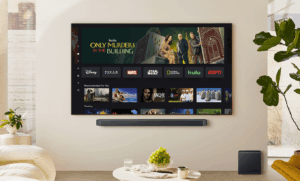
Last month, Apple TV+ became the latest streaming service to increase its prices for Australian subscribers, joining the ranks of Stan, Netflix, Kayo, and Disney+, all of which have implemented price hikes this year. This trend is occurring even as major streaming platforms reduce the number of new shows they produce, leaving the nine in ten Australians who regularly pay for streaming services feeling shortchanged.
Netflix’s hit series Stranger Things is set to return this year, but such high-profile releases are becoming less frequent. The streaming boom in Australia began in 2016 when Stan and Netflix launched their services, marketing themselves as ad-free alternatives to traditional television and more affordable options compared to Foxtel. At launch, Netflix offered a basic plan for $8.99 per month, while Stan entered the market at $10. However, Netflix has since increased its prices six times, with the basic plan now costing $20.99, marking a 133% increase over the past decade.
The Rise and Rise of Streaming Costs
The announcement of these price hikes comes as streaming services face increasing pressure to maintain profitability in a saturated market. Initially, the success of these platforms was measured by rapid subscription growth, a typical metric for tech start-ups. However, as the market matures, the focus has shifted towards sustainable revenue models, often at the expense of consumer satisfaction.
According to industry analysts, the cost of producing original content has skyrocketed, prompting streaming services to pass these costs onto consumers. Dr. Emily Chen, a media analyst at the University of Sydney, commented, “The golden age of streaming, where consumers had access to a plethora of content at low prices, is coming to an end. Companies are now prioritizing profitability over growth.”
Fewer Shows, Higher Expectations
While prices have surged, the number of new shows and movies being produced has dwindled. This reduction in content is partly due to the high costs associated with producing quality programming and the strategic shift towards fewer, but more impactful releases. Netflix’s decision to focus on high-budget productions like Stranger Things reflects this trend, as they aim to create cultural phenomena rather than a vast library of options.
The move represents a significant shift from the early days of streaming, where quantity often took precedence over quality. However, this strategy carries risks, as it may alienate subscribers who feel they are receiving less value for their money. John Smith, a long-time Netflix subscriber, expressed his frustration, “I used to love the variety of shows available, but now it feels like I’m paying more for less.”
Implications for the Future of Streaming
The current trajectory of the streaming industry suggests that consumers may need to adjust their expectations. As platforms continue to refine their business models, the days of endless content at bargain prices could be over. However, this evolution also presents opportunities for innovation and differentiation within the market.
Meanwhile, smaller, niche streaming services are emerging, offering specialized content that caters to specific audiences. These platforms may provide a viable alternative for viewers seeking more tailored programming without the hefty price tag. Dr. Chen noted, “We might see a shift towards more curated content experiences, where viewers pay for exactly what they want to watch.”
As the landscape of video streaming continues to evolve, consumers will need to navigate these changes carefully, weighing the cost against the value of the content they receive. The question remains: will Australians continue to embrace streaming services despite the rising costs, or will they seek alternatives in an ever-changing media environment?






